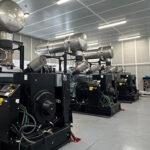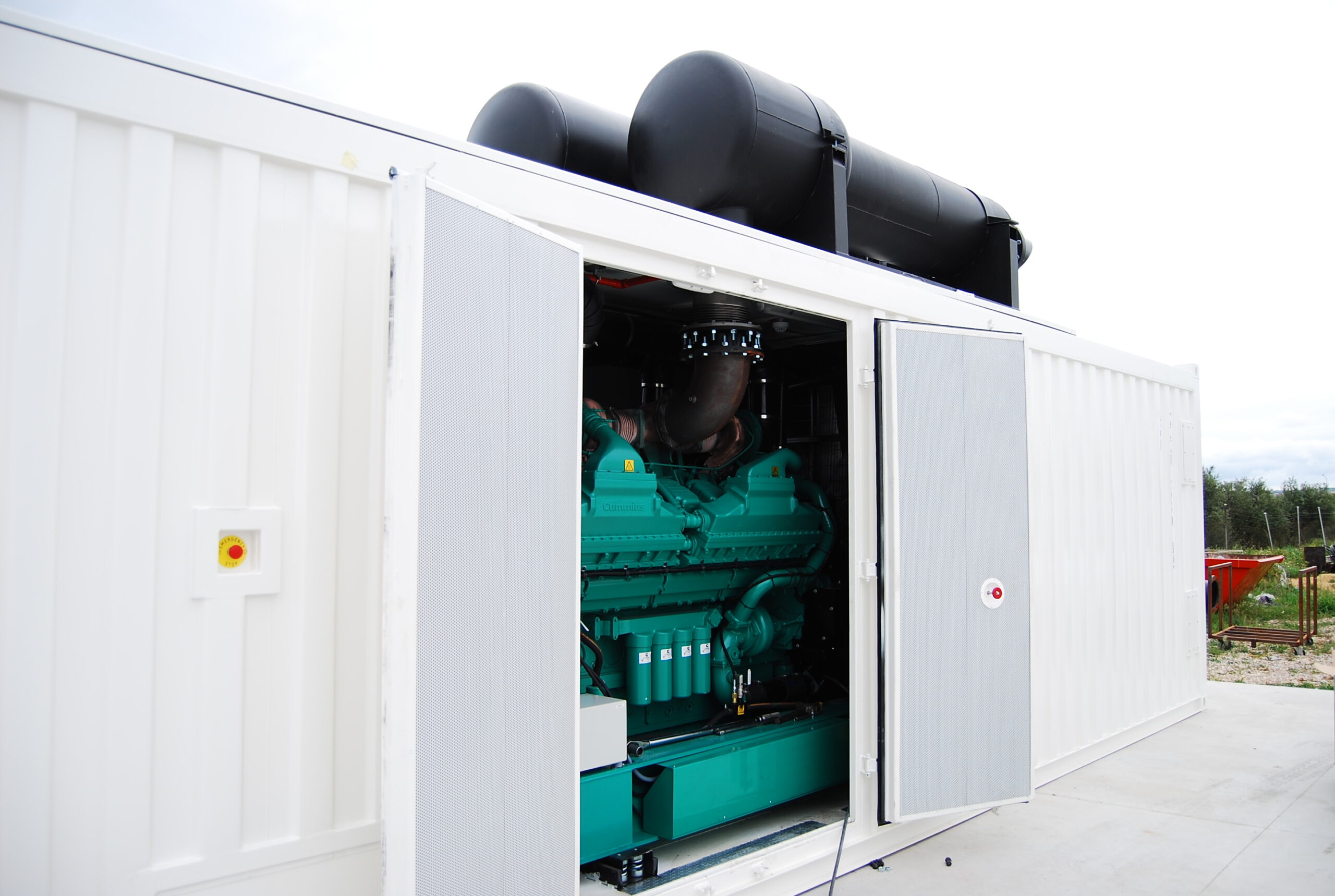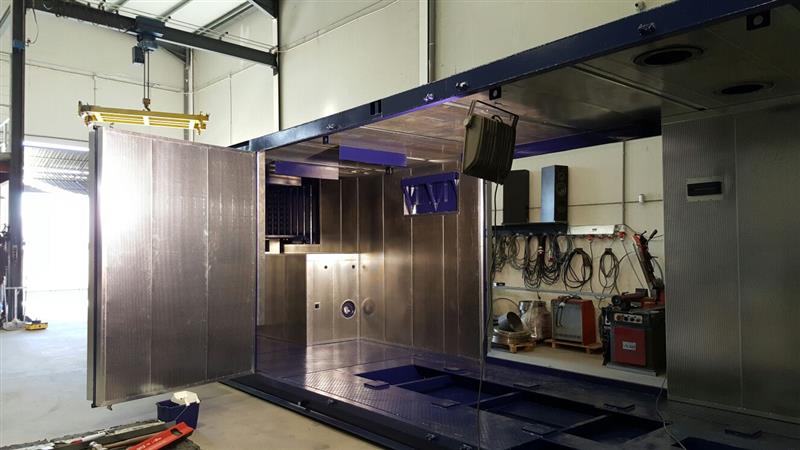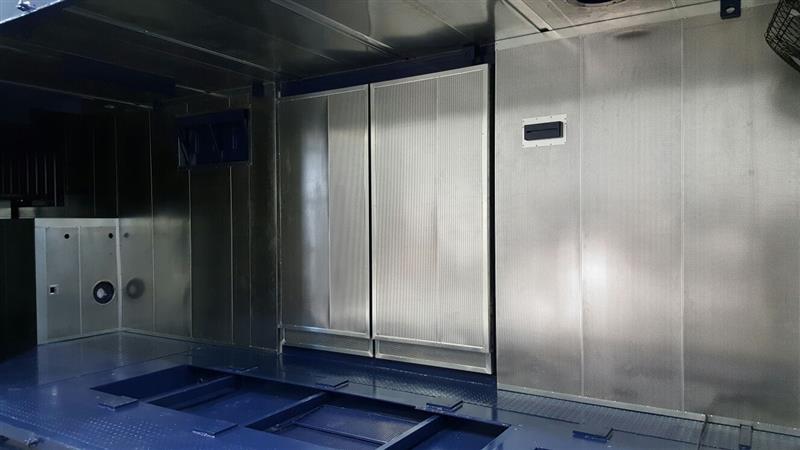
ADVANCED ACOUSTIC SOLUTION FOR A GOVERNMENT BUILDING IN ANGOLA
BEYOND CHOOSING THE RIGHT GENERATOR: THE CRUCIAL ROLE OF ACOUSTIC ENCLOSURES

Ensuring a reliable power solution goes beyond just selecting the right generator. A critical element often overlooked in backup power systems is the generator’s acoustic enclosure. While the generator may seem like the main focus, the acoustic enclosure plays a vital role in its proper functioning.
For an optimal backup power installation, it's important to understand the less obvious factors regarding generator enclosures to make informed decisions and ensure the backup system meets the project's specifications.
THE FORGOTTEN COMPONENT: THE GENERATOR'S ACOUSTIC ENCLOSURE
Choosing a generator is only part of the process. While generators are typically standardized products, designing the appropriate acoustic enclosure can be a more significant challenge. Not all installations present the same conditions, so selecting the enclosure should consider factors such as noise regulation, ventilation needs, maintenance space, and more.
In addition to basic features like ventilation and maintenance access, there are details that are often overlooked but can have a significant impact on the performance and durability of the backup power system.

WHAT MAKETS AN ACOUSTIC ENCLOSURE EXCELLENT
In addition to basic features like ventilation and maintenance access, there are details that are often overlooked but can have a significant impact on the performance and durability of the backup power system.
-
NOISE ATTENUATION
-
- Noise Reduction: The primary function of an acoustic enclosure is to reduce the noise level generated by the generator set. In data centers, this is critical for compliance with regulations and ensuring a safe working environment. High-quality acoustic enclosures can reduce noise levels to 70-75 dB(A) or lower, which is comparable to the sound of a normal conversation.
-
- Panel Design: The panels used should be high-density, typically made of galvanized steel with a core of sound-absorbing material, such as mineral wool or high-density acoustic foam.
- VENTILATION AND THERMAL MANAGEMENT
-
- Adequate Airflow: It is essential that the enclosure is designed to allow adequate airflow, ensuring that the generator receives sufficient air for combustion and that the heat generated is properly dissipated.
-
- Exhaust Systems: The exhaust systems must be properly silenced and thermally insulated to prevent the transmission of heat and noise to the external environment.
-
- Temperature Control: Enclosures should include forced or natural ventilation systems to ensure that the generator set operates within its optimal thermal limits, avoiding overheating.
- FIRE RESISTANCE
-
- Fireproof Materials: Given that data centers handle critical information, it is essential that acoustic enclosures use materials with high fire resistance (certified according to standards such as NFPA 110 or EN 13501-1).
-
- Extinguishing Systems: They must allow the integration of fire suppression systems without compromising the integrity of the acoustic enclosure.
- DURABILITY AND CORROSION RESISTANCE
-
- Resistant Materials: Enclosures should be constructed with corrosion-resistant materials, especially if they are installed outdoors or in high-humidity environments.
-
- Protective Coatings: Paint or galvanization coatings that increase the structure’s lifespan against adverse conditions are highly valued.
- EASE OF ACCESS AND MAINTENANCE
-
- Removable Doors and Panels: For effective maintenance, the design of the enclosure should allow quick and easy access to all critical areas of the generator set without the need to completely dismantle the structure.
-
- Integration of Monitoring Systems: The ability to integrate sensors and monitoring systems to supervise conditions such as temperature, noise levels, and the general operation of the generator is an added value.
- PHYSICAL SECURITY
-
- Vandalism Protection: In a data center, security is paramount. The enclosure should be robust and, if necessary, include locks or controlled access systems to protect the equipment from unauthorized access.
-
- Structural Resistance: Besides being impact-resistant, the enclosure must be able to withstand extreme conditions such as earthquakes or storms, according to local regulations.
- REGULATORY COMPLIANCE
-
- International and Local Standards: Acoustic enclosures must comply with applicable noise, emissions, and safety regulations, such as ISO, NFPA, and OSHA standards. This is crucial for the approval of audits and certifications in data centers.
- AESTHETICS AND COMPACT DESIGN
-
- Minimal Visual Impact: Although functionality is paramount, in many cases, especially in urban data centers, it is valued that enclosures have an aesthetic and compact design that does not interfere with the surroundings.
- INTEGRATION WITH EMERGENCY SYSTEMS
-
- Automatic Start Systems: The enclosure should allow for the integration of automatic start systems that activate in the event of a power grid failure, without compromising acoustic or thermal conditions.
-
- Non-Disruptive Testing: Ideally, it should enable periodic testing of the generator set without the need to disconnect the enclosure or cause noise disturbances.
These features ensure that generator sets installed in data centers operate efficiently, safely, and quietly, protecting both equipment and personnel, and ensuring the operational continuity of the data center.

AN 'OUTSIDE THE BOX' MINDSET IS ESSENTIAL
Finding the right enclosure involves working with a manufacturer who offers a fully flexible design process and the ability to design and manufacture solutions fully tailored to the specific project, thinking 'outside the box.
THE IMPORTANCE OF THE EXTERIOR
In a backup power installation, it’s easy to think that selecting the right generator is the first step to ensuring an adequate backup solution. However, while choosing a generator may be straightforward, finding the ideal enclosure can be the real challenge. By paying close attention to some often-overlooked factors, you can ensure that you select an enclosure for the generator that perfectly meets your data center’s needs and keeps the backup system running smoothly for many years.

